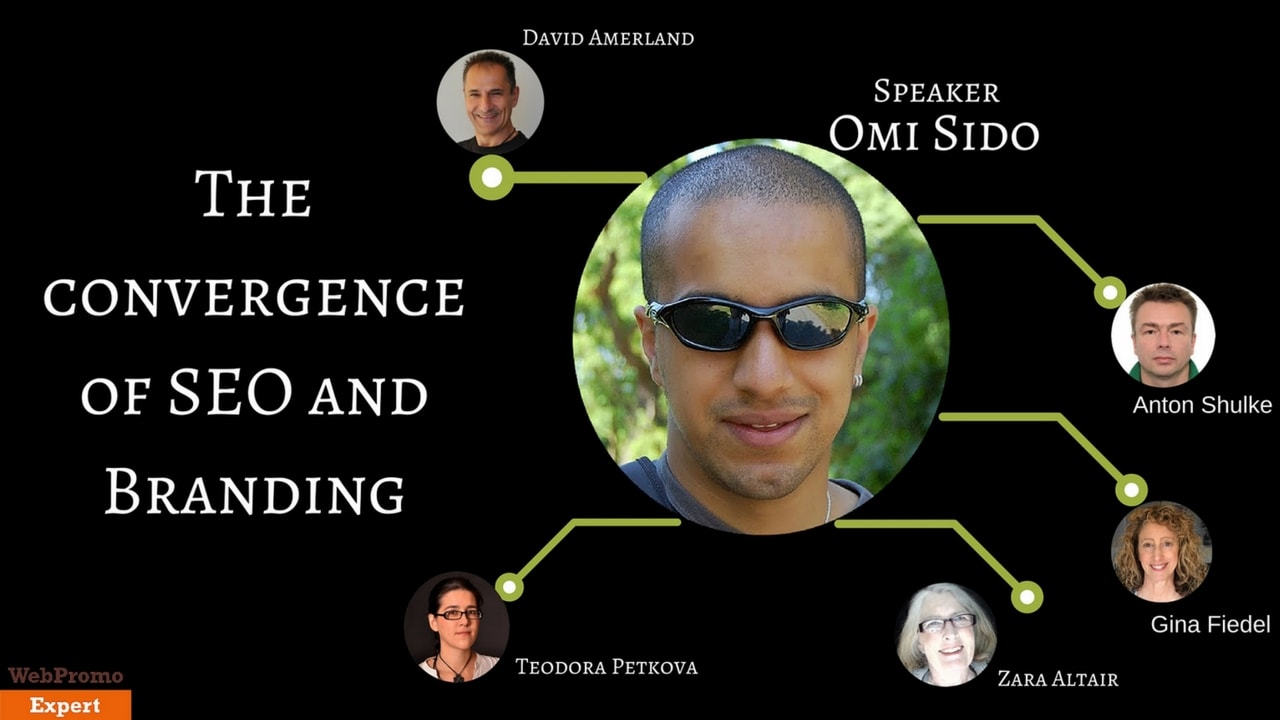Very often I see people online talking about SEO and branding, comparing them both and even arguing which one is better. So let’s be clear about one thing. SEO and branding are two completely different animals and they can and they should work together.
Today I’m gonna try and explain why.
But first thing first. To understand the importance of SEO for branding and branding for SEO we have to start from the bottom.
So the beginning is the understanding of the difference between branding and marketing.
Why do people always think that branding and marketing are the same things? You go and visit a client and he is like tweeting about their latest offer. And he thinks this is branding. He is re-posting on Facebook and he thinks this is branding. In general, he thinks that being on social media is branding.
Google it and I bet you money the first 5 statements are wrong or at least not entirely clear….understand correct.
So let’s clarify this statement. First, there is an internal, the initial part, and then there is an external branding.
What is internal branding?
Internal branding is the drilling we put ourselves through to ask those very simple questions:
- Why are we here?
- What is our business about?
- What is its value?
- What is its unique value on the marketplace?
- What do we bring to the table that nobody else has?
- What’s our message?
- What’s the story, the journey we are taking the customers on?
That’s the internal branding. If try to skip this step you are bound for an online disaster.
“Companies that cannot successfully answer what they do fail to then understand how they can continue to do it in the face of change.” – David Amerland
Now let’s talk about the external branding.
What is external branding?
I would explain external branding with a cliche, but one that is spot on:
Your branding is eventually what other people say about you, no matter what you think.
Shall repeat this one slightly modified: Your brand is what other people are whispering about you when you are not in the room.
And that’s how you eventually judge and make predictions for your business.You get your branding in mind, you start creating the content that flows out of that brand and that brand image and that brand value.
And then you take that out in the social media world and share it, engage with it, use it to create things.
Your next step is to start listening. What are people saying back?
As people start to talk and interconnect with your business what they think you are is fundamentally what your brand really is.
And it does not matter that you may shout and shout: “Hey people wait a minute. This is not me. You are getting it wrong”.
It is not their fault. It is your fault. You are not conveying it right and you have to go back to the drawing boards and ask the question: What are we doing wrong that people are not apprehending who we are and what we really are?
Because this is a fundamental marketing truth that cannot be denied: Consumers build brands, not companies. Consumers are the ones that give value to the brands and businesses should enhance this value by striving to deliver a consistent brand experience that clients can trust.
And so the marketing part then is all the things that you do. And this gets down to the individual channels, what do we do differently on Linkedin. Shall we advertise on TV or Facebook? Are we gonna share our articles on Google Plus or LinkedIn?
What do we do in terms of community involvement and events that we attend and participating? That’s marketing (we can also call it brand marketing).
So now that we know the difference between branding and marketing let’s talk about SEO.
Nine out of ten times when I talk to companies and the so-called digital marketing directors there is always one issue coming up.
“Omi, we have an amazing brand, we know what we are trying to achieve, we know our unique business proposition. On the other hand, we have an amazing digital marketing team, but we still struggle online”.
And then nine out of ten times they did not connect their branding and marketing efforts together. Why?
There is a very simple answer: SEO. SEO is the missing link, the Yeti of the evolution from branding to digital marketing. SEO is part of the branding process, but SEO is also part of marketing.
Let’s start with the simple keyword research. All SEO’s do it on a daily basis. As an SEO, I may call it keyword research. As a marketer, you should probably call it defining my targeted audience. You will be surprised how many companies are trying to sell products and services online without doing the simplest of SEO tasks – keyword research.
Not defying your buyer’s persona will always gonna end up in disaster.
Keywords are like a compass – they tell you where to go and whether not to go because is already overcrowded. Unless you like tight spaces of course.
Keyword research is the marketing of 21 century.
The so-called marketers don’t do it because it’s a pure SEO task. SEOs do it but only because they want to attract the google bots.
The truth is keyword research can help you figure out the needs, the thinking and the desires of your targeted market. It can also help you to understand what the market is thinking about you. And you can use it to your advantage.
Let me give you a famous example. Actually not quite sure that it’s famous but for sure is spot on. A couple of years ago Yost realised that every time people are searching for their product they use the keywords WordPress and Google Analytics in connection with their brand name.
Not a very difficult research actually, just go to the Google Keyword Planner or SEMrush and type your brand name. If you don’t know the keyword planner ask your SEO.
So by putting 2 and 2 together Yost renamed their plugins to ‘Yost SEO’ from ‘Wordpress SEO’ and what was originally ‘Google Analytics Plugin’ became ‘Google Analytics by Yost’. Now I am sure you get the drift straight away. Their brand name is Yost, not WordPress or Google Analytics but by combining them both they legally hijacked two keywords with a massive search volume to work for their benefit.
Go on and type WordPress SEO. What do you see appearing in the Google suggest box? Yoast SEO. SEO and branding at it best.

So it’s time for a power tip: In the ‘Alt’ tag of your images, and I know most of you don’t pay any attention to those, insert your brand name. Ask your SEO to crawl your website with Screaming Frog and give you the location of all your images.You don’t want any other brands popping up when somebody is looking for your brand in the picture search.
Note: I hope you understand that there is no point connecting your brand name and an image button.
Also connected to images give Google something that they really understand: schema. Even better combine logo schema with keyword rich alt tag for a better SEO impact.
<div itemscope itemtype="https://schema.org/logo">
<a itemprop="url" href="http://www.yourwebsite.com/"><img itemprop="logo" src="https://www.yourwebsite.com/keyword-targeted-image-file-name.png"
alt="keyword targeted alt tag"/></a>
</div>
My second power tip will be: Always put your brand name in your Page Title. I know there are so many arguments on the web about whether or not to do it. If you think that you cannot have a Page title accommodating 55 characters plus Brand Name include it anyway. Google will cut your page title off anyway so there is nothing to worry about. But Google will associate the keywords in your Page Title with your brand. I’ve even seen Google cutting off a page title in order to display brand name. Now you’ve got something to think about.
So far we’ve been talking about SEO helping branding.
But can your brand boost your SEO?
Will start with an example. I’ve seen many people complaining about Google giving a boost of famous brands in the SERPs. They are like: I can never fight with the big brands because Google loves them and they are always number one and two in the SERPs.
So let’s examine this statement from a consumer’s point of view.
The other day I was looking for new tyres for my motorbike.
As usual, I sit in front of my Mac and I type ‘Motorcycle tyres’. Probably cheap motorcycle tyres. Imagine I see 4 websites appearing in position number one, two, three and four.

The first one is www.davidamelrandstyres.com. I don’t know about you but I would be very sceptical about buying motorbike tyres from a writer. I love my life you know.
Second comes www.fateyestyres.com They even say they are the best on the market. I know Gina, I like her a lot but I know her more as a writer. Her writing is good but I’d rather check URL number 3: www.altayrtyres.com (difficult to pronounce, I know).
As far as I know Zara Altair was a teacher. I should probably do my homework before buying from her.
So I am left with URL number 4. And this is Pirelli. See the first 3 websites are well optimised from an SEO point of view, from a semantic point of view even local SEO point of view. This is exactly why the Googlebots are ranking them high. The problem is I do not know those brands. So I click on URL number four.
Google has a well-defined brand identity: we give you the best possible result. So imagine the next day the way Google is thinking – well yesterday 5 000 million people were looking for motorbike tyres and 95% of them clicked on the URL coming in the fourth position. I believe you gonna agree with me that this is the URL that has to be so to speak unnaturally boosted by Google to position number one. And it’s not Google. The consumer boosted this URL by choosing one more recognised brand over another.
Now tell me there is no point in developing your brand name using SEO techniques. Or you do not understand the importance of developing a recognised brand name in order to boost your SEO. The end result – more qualified visits and money coming your way.
“Brand is a huge factor in SEO, as it affects click-thru, exemplifies ‘trust’ factors, and generally provides a sort of benchmark for all rivalry. Additionally, many searches that return huge amounts of information actually create doubt, uncertainty, and in such situations, most customers stick with what they know. Brands get business where doubt and uncertainty prevail” – Ammon Johns


Leave a Reply